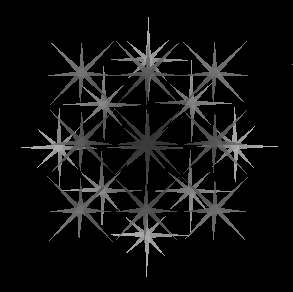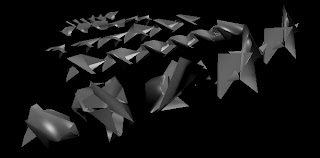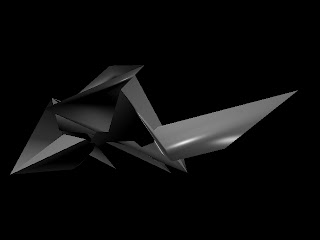Notes while reading:
-"everything that's worth understanding about a complex system can be understood in terms of how it processes information"
-Versioning: Recent shift in way architects are using technology to expand the potential effects on design
-computer has enabled a rethinking of the design process in terms of procedure and outcome, in ways common practice cannot conceive of
-Vector>Pixel
-By not relying on a formal approach, the practice of versioning is capable of responding in a nonlinear manner to various influences
-Methods of disassembly and reuse can be built into the design process through versioning
General Thoughts:
I found this read a little repetitive to the reading last week but I certainly appreciate the overall theme in that technology is changing the process of design and creating new opportunities for designers to experiment with forms that we never may have been able to even think of before. What I found particularly interesting was the discussion of highway design. The different "pieces" to a highway reminded me in a sense of the ideal kit of parts that we think of in architectural design. What amazed me was that highway designers take into account turn radiuses, etc to create an optimal flow of traffic. I had never heard or thought of this before and is certainly interesting to parallel with the architectural design process. We too can manipulate form and space to create optimal means of circulation, vistas, etc in design. In relation to the new technologies, we can design new, nonlinear forms that may do a better job of this now than traditional forms have in the past.
Monday, February 20, 2012
1C Pattern Surfaces
I began this part of the project by extracting one of the triangular faces on the top part of the body of my guitar model, because I found it would be one of the more interesting geometries to mess around with. I began with a series of sketches of star-like patterns created by duplicating and manipulating this form to create a two-dimensional star like surface. I then duplicated that surface 9 times to form a 9-starred grid.
After doing so, I combined each individual surface to form one polygonal surface, then duplicated this form and moved it negatively in the Z direction to give it some spatial depth from its predecessor. I then rotated this new 9 starred grid 45 degrees, which in plan view, creates a very interesting, somewhat abstract snowflake like pattern.
Here is an additional three dimensional view looking down on the two two-dimensional surfaces.
After doing so, I combined each individual surface to form one polygonal surface, then duplicated this form and moved it negatively in the Z direction to give it some spatial depth from its predecessor. I then rotated this new 9 starred grid 45 degrees, which in plan view, creates a very interesting, somewhat abstract snowflake like pattern.
Here is an additional three dimensional view looking down on the two two-dimensional surfaces.
Sunday, February 12, 2012
The first row of my Matrix begins with the neck form of the guitar from the previous project and transforms it through a series of edge manipulations.
The second row takes the final form of the previous row and transforms it through a series of face manipulations.
The third row again takes the final form of the previous row and puts it through a series of vertex manipulations.
"Roller-Coaster Construction"
This was an interesting read for me in that it has, in a sense, disagreed or counteracted with certain design principles that I have paid much attention to in past studios. The article encourages removing oneself from the restrictions that materiality and construction can have on creativity during the design process. To not focus on materiality and construction while designing creates new options and allows for a vast array of abstract forms to be thought up and considered. Once the form is derived, building construction and materials can be analyzed. In previous projects, for myself, this has limited me creatively during the design process, and is certainly something to think about moving forward with future projects.
This was an interesting read for me in that it has, in a sense, disagreed or counteracted with certain design principles that I have paid much attention to in past studios. The article encourages removing oneself from the restrictions that materiality and construction can have on creativity during the design process. To not focus on materiality and construction while designing creates new options and allows for a vast array of abstract forms to be thought up and considered. Once the form is derived, building construction and materials can be analyzed. In previous projects, for myself, this has limited me creatively during the design process, and is certainly something to think about moving forward with future projects.
Monday, February 6, 2012
Have been successful thus far in modeling the body of the typical acoustic guitar. Working on how to connect these pieces to form one solid body of the guitar piece. Created these originally as curves, the body on the right was lofted and the ones on the left were made into polygons. Currently trying again with one large polygonal cube and trying to form it into the form of the guitar.
Subscribe to:
Posts (Atom)














